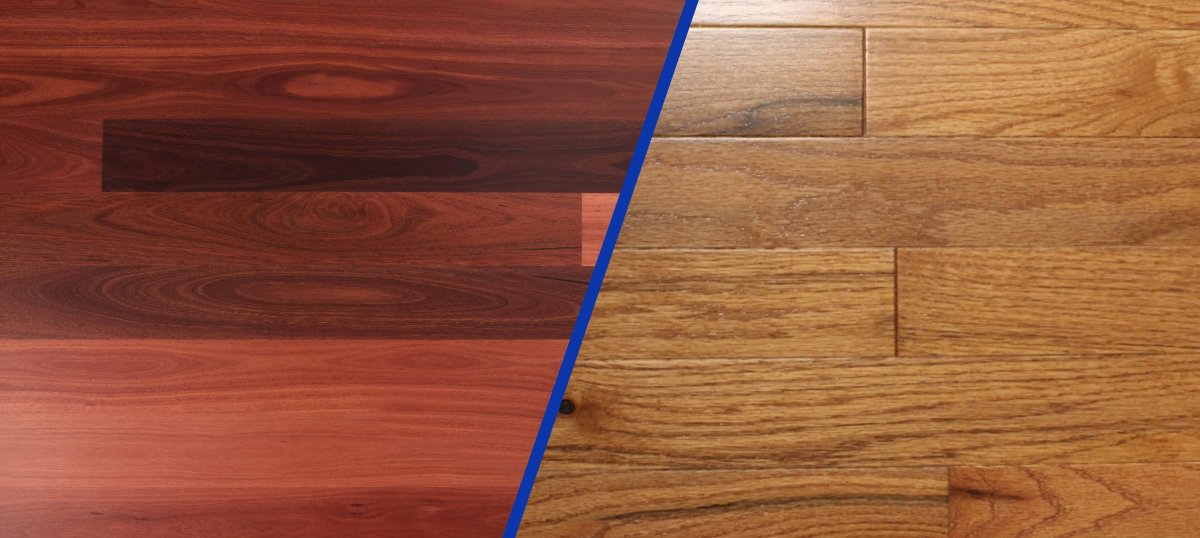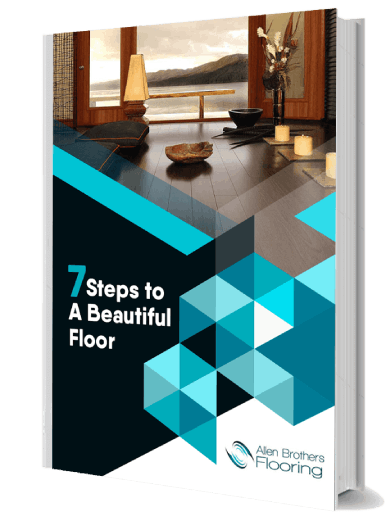
Timber Flooring Tips
What type of timber floor is best for your Perth home?
That’s a tough question to answer with popular, durable and stylish options like Jarrah and Oak to choose from.
So we’ll compare each option to find the timber flooring that meets your budget, style and needs.
Jarrah, a native Australian hardwood, is known for its deep red hues and high durability. Popular throughout Western Australia, this dense timber offers character, resistance to wear, and natural termite deterrent, making it an enduring favourite.
Oak, on the other hand, is a timeless European or American classic. Lighter in tone and grain, it’s adaptable across a wide range of interior styles, from heritage to contemporary.
Both species offer beauty and performance — yet they differ in subtle ways that matter to homeowners who demand long-term quality and aesthetic harmony.
Whether you’re renovating a heritage cottage or planning a modern build, understanding how Jarrah and oak measure up across key areas is essential.
Read on to learn everything you need to know.
| Feature | Jarrah | Oak |
| Colour | Deep red to reddish-brown | Pale blond to mid-brown |
| Durability | Very high, dense timber | Moderate, softer underfoot |
| Termite Resistance | Natural resistance | Requires sealing |
| Refinishing | More difficult due to hardness | Easier, takes stain well |
| Style Versatility | Bold, best for traditional interiors | Highly versatile, suits modern styles |
| Availability in Perth | Locally sourced | Mostly imported |
| UV Sensitivity | Minimal colour change | Light colours may yellow |
Jarrah, due to its density, offers slightly lower thermal conductivity, helping homes stay cooler in summer and warmer in winter — a natural fit for Perth’s climate extremes.
However, its weight can pose installation challenges, particularly for upper-storey applications. Oak provides decent insulation but not to the same degree. It’s also lighter and easier to work with, which can reduce labour time during installation.
Jarrah typically commands a premium price, both in raw material and labour. Its density and grain structure make milling and installation more complex, which may inflate overall project costs.
Oak, being imported in large volumes, often arrives pre-finished or engineered, which can result in more cost-effective options, especially for homeowners working within a set renovation budget.
Both hardwoods are built to last, but Jarrah sits in a class of its own when it comes to resilience. It’s not just hard; it resists impact, insect damage, and general wear like few others.
Properly maintained, Jarrah floors can exceed 50 years. Oak is also durable and can last several decades with routine care, though it’s slightly more prone to dents from heels, furniture, or active pets.
Jarrah offers warmth, depth, and drama with its signature red hues. It creates a grounded, opulent feel — ideal for traditional or rustic spaces. Oak leans towards adaptability.
With its lighter tones and neutral grain, oak works beautifully in coastal, Scandinavian, or minimalist interiors, common in many modern Perth builds.
Jarrah, being native to Western Australia, has lower transport emissions and is often available with Forest Stewardship Council (FSC) certification.
Oak, while also available as FSC-certified, usually involves transcontinental shipping, which increases its carbon footprint. However, many suppliers now offer eco-certified engineered oak options that balance aesthetics and responsibility.
Jarrah’s hardness, while a benefit in terms of durability, makes refinishing more labour-intensive. Sanding takes longer and requires precision.
Oak, by contrast, sands easily and takes stains or oils evenly, allowing homeowners to update its finish with less hassle.
Jarrah is better suited to solid timber installations where the subfloor can support its weight and thickness. Oak’s ease of machining makes it a go-to for custom widths and modern joinery.
If you’re considering floating or engineered systems, oak often offers more flexibility.
NEW: How to Care For Floating Timber Floors
| Factor | Jarrah | Oak |
| Efficiency | Low thermal conductivity | Moderate insulation value |
| Cost | Higher due to sourcing and density | Typically more affordable |
| Durability & Lifespan | Very high, up to 50+ years | High, up to 40+ years with care |
| Aesthetics | Bold, rich reddish tones | Light, versatile hues |
| Environmental Impact | Locally sourced, FSC available | Often imported, but also FSC options |
| Maintenance | More difficult to sand/refinish | Easier to maintain and recoat |
| Installation Flexibility | Limited due to hardness | Easily cut and installed |
| Termite Resistance | Naturally resistant | Requires professional sealing |
Jarrah truly comes into its own when installed as solid timber flooring. Its density makes it a stable, hard-wearing option that handles direct stick or nail-down installations with ease, particularly over concrete slabs or timber joists.
Homes built on concrete pads, especially in older Perth suburbs, are ideal candidates. However, because of its weight and hardness, installing Jarrah requires experienced floor layers with specialist tools.
Oak is also a solid performer here, but tends to be easier to work with. It cuts cleaner, responds better to fasteners, and suits direct stick installations over both timber and concrete.
If you’re after that classic floorboard look with easier handling during install, oak wins on practicality, especially for DIY-friendly or builder-led projects.
Oak dominates the engineered flooring space. Engineered boards feature a hardwood top layer bonded to a plywood or multi-layer base, offering superior stability and easier handling.
For upper floors, apartments, or homes with underfloor heating, engineered oak is lighter, less prone to movement, and compatible with click-lock systems, which speed up installation and reduce labour costs.
Jarrah, while available in engineered forms, is less common in this format and usually more expensive.
Still, some Perth suppliers offer engineered Jarrah boards designed to preserve the iconic colour without the weight and rigidity of full hardwood, perfect for renovations where structural load is a concern.
Floating floors don’t require nails or glue; instead, boards lock into place over an underlay. Oak’s lighter weight and engineered varieties make it ideal for this method.
Whether you’re living in the home during the upgrade or want to reduce mess and downtime, floating engineered oak provides speed and convenience without sacrificing appearance.
Jarrah, due to its density and tendency to expand or contract with environmental changes, is less suited for floating installations.
While technically possible, floating Jarrah floors can creak or shift if not installed with extreme care and high-quality underlay systems. It’s better suited to fixed installations where stability and structure are assured.
In character homes or period restorations, Jarrah’s bold grain and colour match existing timber elements often found in older Perth builds.
For patching, extending, or restoring existing Jarrah floors, keeping consistency is key, and there’s no better match than genuine Jarrah.
In contrast, oak’s adaptability makes it perfect for newer homes where design aesthetics take precedence over tradition.
If you’re refreshing a space and want more control over the final look, engineered or solid oak provides flexibility in tone, width, and finish, catering to a wide range of interior visions.
When it comes to selecting between Jarrah and oak flooring, there’s no one-size-fits-all answer — only the choice that aligns best with your home’s needs, your aesthetic preferences, and how you live day to day.
Jarrah brings undeniable strength, rich tones, and a proud West Australian heritage. It's the go-to for those who value resilience, natural termite resistance, and the kind of deep, enduring character that only native hardwood can provide.
However, it comes with higher upfront costs, demands expert installation, and may not suit all design styles.
Oak delivers versatility, design freedom, and ease of installation. Its softer nature makes it easier to work with and maintain, and it thrives in modern spaces with its lighter tones and wide range of engineered options.Still, it’s more susceptible to wear over time and typically requires sealing to guard against pests and moisture.
Which should you choose?
Choosing the right timber is only half the story — how it's installed, finished, and cared for makes all the difference.
At Allen Brothers Flooring, we’ve spent over 30 years helping Perth homeowners navigate these decisions with confidence, precision, and pride.
Our team combines deep product knowledge with hands-on craftsmanship to ensure every floor reflects the beauty, durability, and care it deserves.
Whether you're leaning towards the bold elegance of Jarrah or the adaptable charm of oak, we’re here to guide you every step of the way — from product selection to final polish.
Contact Allen Brothers Flooring today for expert advice, premium-grade materials, and a free, no-obligation quote.

